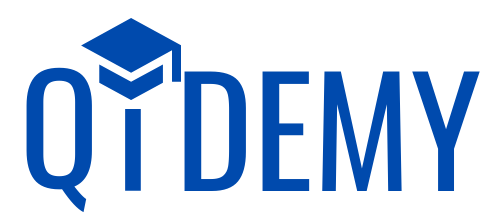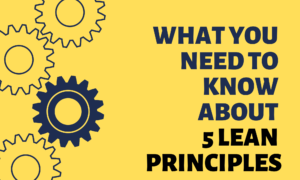Kaizen is a Japanese philosophy that emphasizes continuous improvement in all aspects of life, including business. This philosophy involves making small, incremental changes to processes and systems, rather than large-scale changes, in order to identify and eliminate inefficiencies and waste. By implementing Kaizen principles, businesses can improve productivity, reduce costs, and stay competitive in today’s rapidly evolving business landscape.
In this article, we will discuss the five key elements of Kaizen and their importance in creating a culture of continuous improvement within organizations. These elements provide a framework for achieving Kaizen’s fundamental goal of identifying and eliminating waste, improving efficiency, and enhancing the quality of products and services. By understanding and implementing these elements, businesses can create a culture of collaboration and innovation that fosters continuous improvement and long-term success.
Table of Contents
#1 Continuous Improvement
Continuous improvement is the first element of Kaizen and is critical to achieving the philosophy’s overall goal of identifying and eliminating waste, improving efficiency, and enhancing the quality of products and services. Continuous improvement involves making small, incremental changes to processes and systems over time, rather than large-scale changes that can be disruptive and difficult to implement.
By focusing on continuous improvement, businesses can identify and eliminate inefficiencies and waste in their processes, resulting in significant cost savings and productivity improvements. For example, a study by the Lean Enterprise Research Centre found that implementing a continuous improvement program resulted in an average cost reduction of 20% and productivity improvements of 30-50% over a five-year period.
To achieve continuous improvement, businesses must create a culture of collaboration and innovation that encourages employees to identify problems and suggest solutions. By involving employees in the improvement process, businesses can tap into their knowledge and experience to identify opportunities for improvement that may not be apparent to management.
#2 Employee Involvement
The second element of Kaizen is employee involvement, which is essential for creating a culture of continuous improvement. Kaizen encourages employees to contribute to the improvement process by identifying problems and suggesting solutions. By involving employees in the improvement process, businesses can tap into their knowledge and experience to identify opportunities for improvement that may not be apparent to management.
To achieve employee involvement, businesses must create a culture of collaboration and innovation that encourages employees to share their ideas and suggestions for improvement. This requires open communication channels between employees and management, as well as a willingness to listen to feedback and take action on employee suggestions.
When employees feel that their contributions are valued and that they have a stake in the success of the organization, they are more likely to be engaged and motivated. This can result in increased productivity, higher quality products and services, and improved customer satisfaction.
Creating a culture of collaboration and innovation is essential for fostering employee involvement and achieving continuous improvement. By involving employees in the improvement process and valuing their contributions, businesses can achieve significant improvements in productivity, quality, and customer satisfaction.
#3 Gemba
The third element of Kaizen is Gemba, which refers to the actual place where work is done. Gemba emphasizes the importance of observing and understanding work processes in order to identify and address issues at the source. This involves going to where the work is actually done and seeing it firsthand, rather than relying on reports or data.
By observing work processes at the source, businesses can identify inefficiencies and waste that may not be apparent from a distance. This can lead to targeted improvements that address the root cause of problems, rather than simply treating symptoms.
Gemba is an essential element of Kaizen because it emphasizes the importance of understanding work processes in order to identify opportunities for improvement. By going to where the work is actually done and observing it firsthand, businesses can identify inefficiencies and waste and take targeted actions to address them.
#4 Standardization
The fourth element of Kaizen is standardization. This involves developing and following standardized work processes in order to ensure consistency and quality. Standardization helps businesses to establish a baseline for performance and identify opportunities for improvement.
Standardization is an important element of Kaizen because it provides a foundation for continuous improvement. By establishing standardized processes and procedures, businesses can identify opportunities for improvement and track progress over time.
#5 PDCA Cycle
The fifth element of Kaizen is the PDCA cycle. This stands for Plan, Do, Check, Act and involves a continuous cycle of improvement. The PDCA cycle emphasizes the importance of planning improvements, implementing them, checking the results, and making further improvements based on what was learned.
The PDCA cycle is an essential element of Kaizen because it provides a framework for continuous improvement. By continuously planning, doing, checking, and acting on improvements, businesses can create a culture of continuous improvement that drives long-term success.
Demo Example: Continuous Improvement in a Manufacturing Plant
Continuous improvement is a key element of Kaizen, and can help manufacturing plants to identify and eliminate inefficiencies and waste. Let’s consider a hypothetical manufacturing plant that produces automotive components. The plant has identified a need to improve efficiency and reduce costs in order to remain competitive.
- Continuous Improvement: The plant implements a continuous improvement program to identify and eliminate inefficiencies in its production process. Through regular process reviews, the plant identifies several areas where improvements can be made, including reducing setup times and improving inventory management.
- Employee Involvement: Employees are encouraged to contribute to the improvement process by identifying problems and suggesting solutions. The plant forms a cross-functional team to develop and implement solutions to the identified issues. The team is made up of representatives from different departments, including production, logistics, and quality control.
- Gemba: The team visits the production floor, or Gemba, to observe and understand work processes. They identify several opportunities for improvement, including standardizing work instructions, reducing unnecessary movement of materials, and optimizing machine setup times.
- Standardization: The team develops and implements standardized work instructions for each manufacturing process. This helps to ensure that every worker follows the same process, which reduces errors and variability. In addition, the team implements a kanban system to optimize inventory levels, which helps to reduce waste.
- PDCA Cycle: The team uses the PDCA cycle to continually improve its processes and systems over time. They plan the improvement, implement the plan, check the results, and make further improvements based on what they learned. This process is repeated on a regular basis to ensure that the plant continues to improve over time.
Table: Results of Continuous Improvement Efforts
| Metric | Before | After |
| Setup Time (minutes) | 60 | 30 |
| Production Time (hours) | 8 | 9 |
| Scrap Rate (%) | 5 | 2 |
| Inventory Turns | 6 | 10 |
The table above shows the results of the continuous improvement efforts implemented by the manufacturing plant. The setup time was reduced from 60 to 30 minutes, which allowed for an additional hour of production time per day. The scrap rate was also reduced from 5% to 2%, which resulted in significant cost savings. Finally, the inventory turns increased from 6 to 10, which helped to reduce waste and improve cash flow.
FAQ
Here are some frequently asked questions related to the 5 elements of Kaizen:
Q: What is Kaizen?
A: Kaizen is a Japanese philosophy that emphasizes continuous improvement in all aspects of life, including business. It involves making small, incremental changes to processes and systems in order to improve efficiency, quality, and effectiveness over time.
Q: What are the five elements of Kaizen?
A: The five elements of Kaizen are continuous improvement, employee involvement, Gemba, standardization, and the PDCA cycle.
Q: Why is continuous improvement important in Kaizen?
A: Continuous improvement is important in Kaizen because it involves making small, incremental changes over time that can have a significant impact on overall efficiency and quality. By focusing on continuous improvement, organizations can identify and eliminate inefficiencies and waste, and make ongoing improvements to their processes and systems.
Q: How does employee involvement contribute to Kaizen?
A: Employee involvement is essential in Kaizen because it encourages employees to identify problems and suggest solutions for improvement. When employees feel empowered to contribute to the improvement process, they are more likely to be engaged and committed to making positive changes in the organization.
Q: What is Gemba and how does it relate to Kaizen?
A: Gemba is a Japanese term that refers to the actual place where work is done. In Kaizen, Gemba emphasizes the importance of observing and understanding work processes in order to identify and address issues at the source. By focusing on the work environment and processes, organizations can make targeted improvements that have a significant impact on overall efficiency and quality.
Q: Why is standardization important in Kaizen?
A: Standardization is important in Kaizen because it helps to ensure consistency and quality in processes and systems. By developing and following standardized work processes, organizations can reduce errors, improve efficiency, and make it easier to identify and address issues when they arise.
Q: What is the PDCA cycle and how does it relate to Kaizen?
A: The PDCA cycle is a four-step process that involves planning, implementing, checking, and acting on improvements. In Kaizen, the PDCA cycle is used to continually improve processes and systems over time. By following this cycle, organizations can identify areas for improvement, implement changes, evaluate the results, and make ongoing improvements to achieve better outcomes.
Additional Resources
Here are a few more resources related to Kaizen that readers may find helpful:
- The Kaizen Way: https://www.kaizen.com/about-us/the-kaizen-way.html
- Lean Enterprise Academy: https://www.leanuk.org/principles/kaizen/
- Business News Daily: https://www.businessnewsdaily.com/15206-kaizen-definition.html
- The Deming Institute: https://deming.org/management-system/principles/kaizen/




